POND WEED
IDENTIFICATION
This comprehensive list of the main species of aquatic weed will help you to identify the weed causing problems in your waterway.
The information detailed below is only a guide to the weed you may find in your lakes or waterways, some species of non native weeds cannot be removed by mechanically harvesting, for more information please contact one of our team.
Click on the species button for full details.
CANADIAN PONDWEED
(Elodea Canadensis)
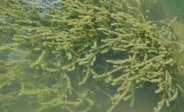
Found in lakes, ponds, canals and slow moving water. It relies entirely on vegetative reproduction for its spread.
Control: Mechanical cutting in spring and removal of all vegetation to prevent deoxygenation.
AUSTRALIAN SWAMP STONECROP / NEW ZEALAND PIGMYWEED
(Crassula helmsii)
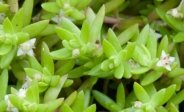
Australian Swam Stonecrop, also known as New Zealand Pigmyweed grows around damp pond banks, depleting oxygen levels.
Control: Chemical treatment followed by mechanical removal.
BULRUSH
(Typha Latifolia)

Bulrush (Typha Latifolia) grows between 1.5 metres and 3 metres high, and spreads rapidly in shallow waters.
Control:Mechanical cutting and removal during winter.
COMMON REED
(Phragmites Australis)
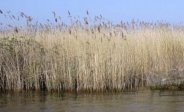
Common Reed (Phragmites Australis) grows in shallow wetlands and is extremely invasive and hardy.
Control: Digging out of rhizome, annual mechanical cutting and removal, all during winter.
CURLED PONDWEED
(Potamogeton crispus)

Curled Pondweed grows rapidly in summer, impeding water flow and invading recreational and navigational watercourses.
Control: Digging out rhizomes and mechanical cutting.
CURLY WATERWEED
(Lagarosiphon major)

Curly Waterweed (Lagarosiphon major) grows in depths of 3 metres, this pond weed is very hardy and tolerant.
Control: Digging out of rhizome, annual mechanical cutting and removal, all during winter.
DUCKWEED
(Lemna species)
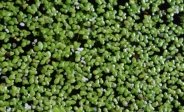
Duckweed (Lemna species) are small, free-floating plants which form dense mats on the surface of ponds.
Control: The removal of Duckweed by rake is the most practical solution.
FLOATING PENNYWORT
(Hydrocotyle ranunculoides)
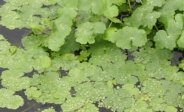
Floating Pennywort grows in shallow areas of slow-flowing water, this weed is highly invasive and hardy.
Control: Annual mechanical cutting and removal of vegetation.
FRINGED WATERLILY
(Nymphoides Peltata)

Fringed Waterlilys (Nymphoides Peltata) grow in still or slow-moving, shallow waters with a rhizome root system.
Control: Mechanical cutting and removal.
MARES TAIL
(Hippuris vulgaris)

Mare's Tail (Hippuris vulgaris) grows in depths up to 3 metres in very cold waters this is a vigorous, hardy plant.
Control: Mechanical cutting in late summer.
NUTTALS PONDWEED
(Elodea nuttalli)
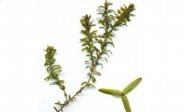
Nuttall's Pondweed (Elodea nuttalli) is similar to Canadian Pondweed except the leaves which narrow to a point.
Control: Mechanical cutting in early spring and removal of all vegetation to prevent deoxygenation.
PARROT'S FEATHER
(Myriophyllum aquaticum)
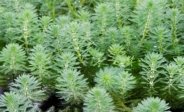
Parrot's Feather (Myriophyllum aquaticum) can grow in and out of water, with brittle stems which can easily fragment and reproduce.
Control: Mechanical cutting and removal of all vegetation including fragments.
SPIKED WATER MILFOIL
(Myriophyllum spicatum)

Spiked Water Milfoil (Myriophyllum spicatum) is a submerged plant with feathery leaves which forms dense groups.
Control: Mechanical cutting and complete removal of vegetation.
WATERFERN
(Azolla filiculoides)
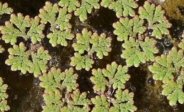
Waterfern (Azolla filiculoides) is a free-floating fern that forms a dense mat on the surface of ponds, lakes, canals and slow flowing rivers
Control: This invasive weed can be removed with sieves
WATER PARSNIP
(Berula erecta)

Water Parsnip (Berula erecta) also known as cutleaf water parsnip grows in shallow, flowing water at the water's edge.
Control: Mechanical cutting before flowering and removal of vegetation.
WATER SOLDIER
(Stratiotes)

Water Soldier (Stratiotes) lies on bottom in winter and new growth floats to the surface in spring, forming dense colonisations.
Control: Remove vegetation with mechanical rake when plant is floating.




